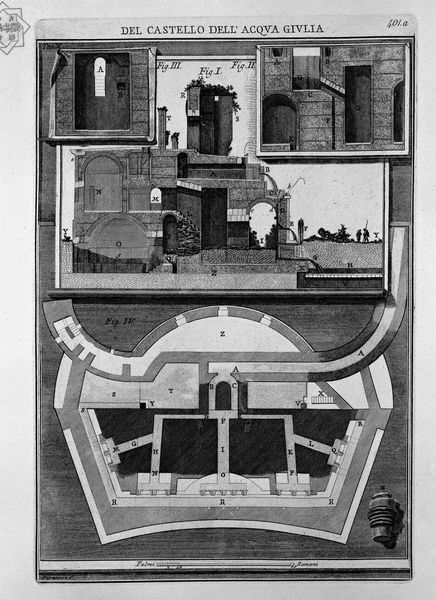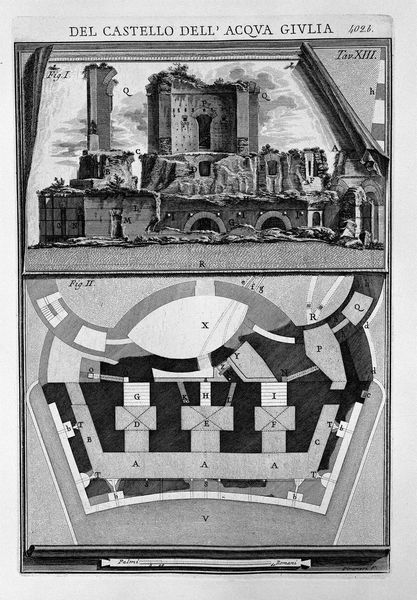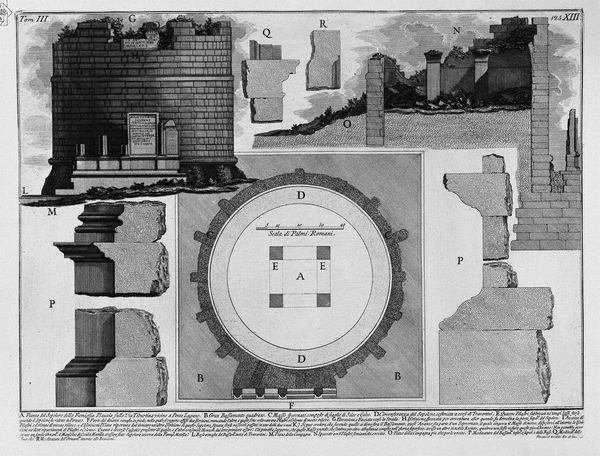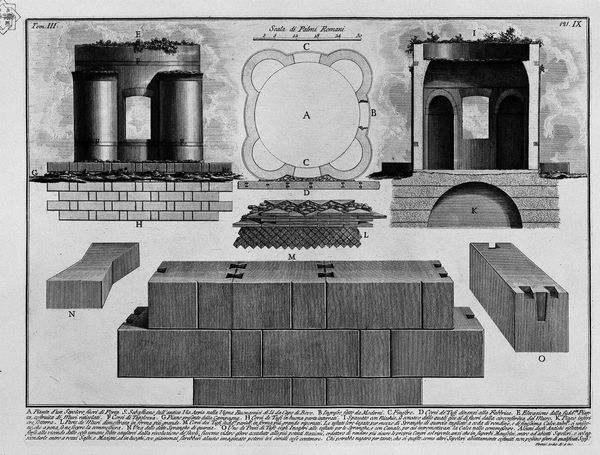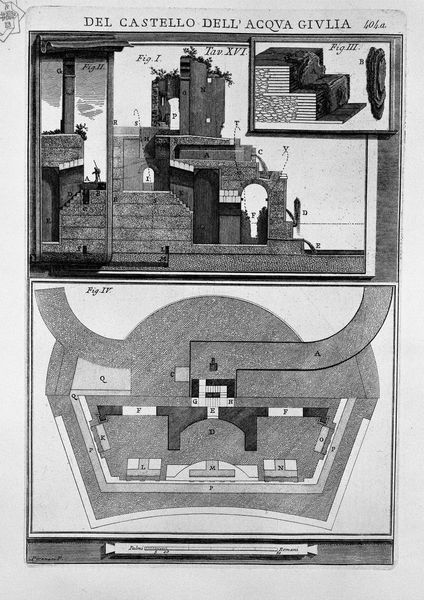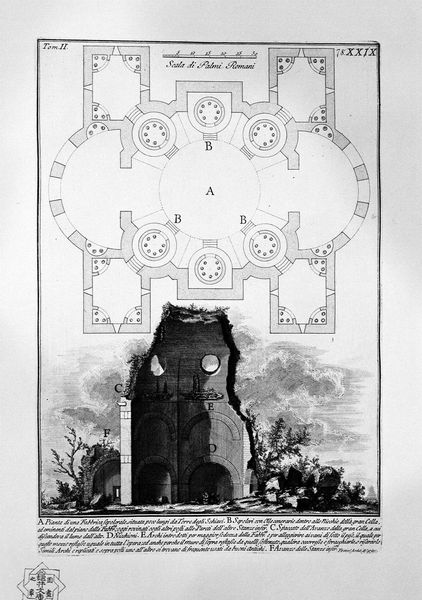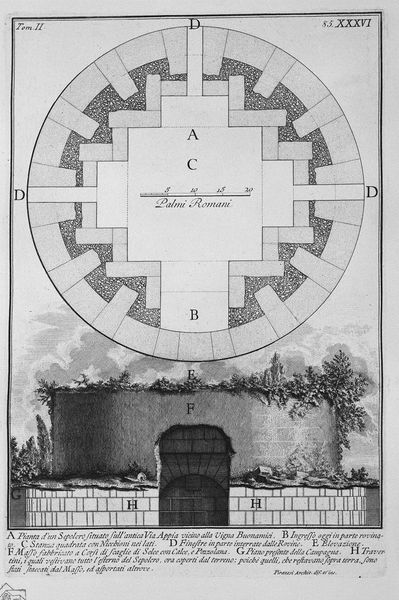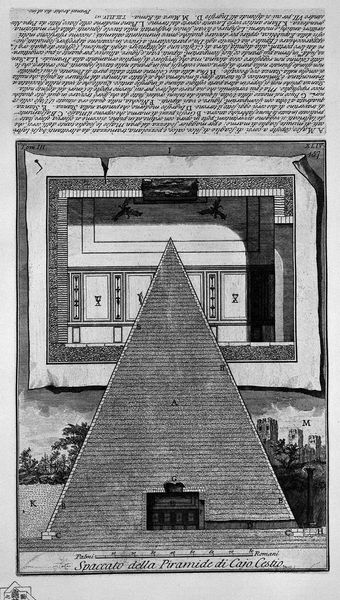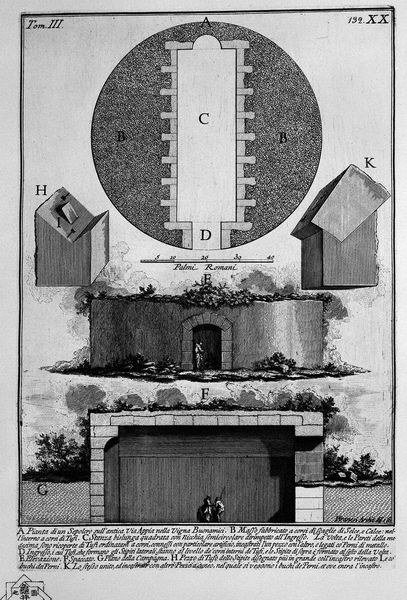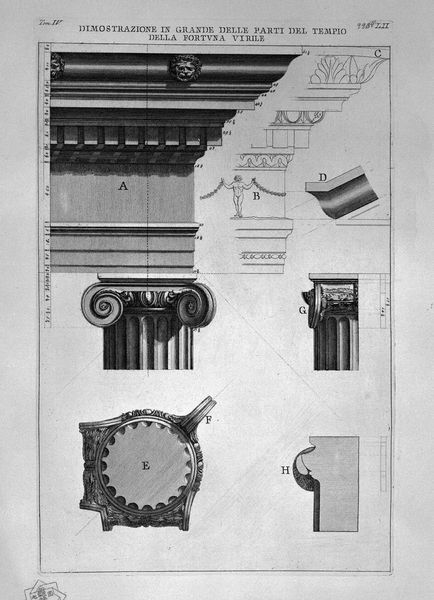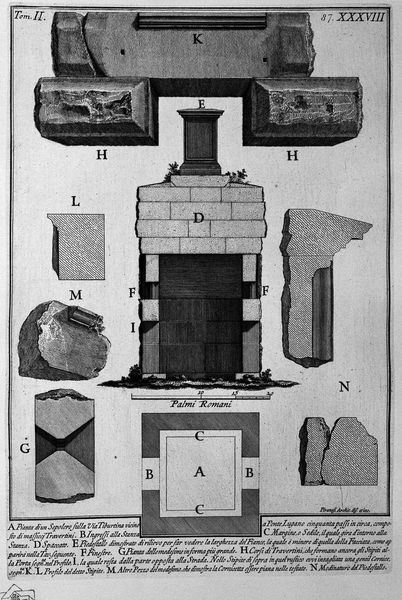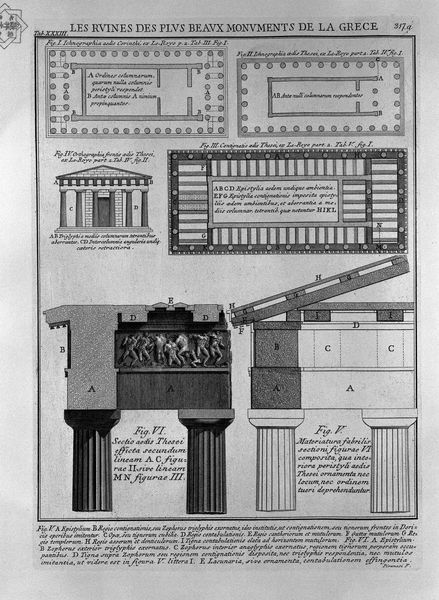
The Roman antiquities, t. 2, Plate LIX. Plan and elevation of factory magnificent tomb outside Porta Maggiore located near Torre de `Schiavi.
0:00
0:00
drawing, print, etching, intaglio, engraving, architecture
#
drawing
# print
#
etching
#
intaglio
#
historic architecture
#
form
#
romanesque
#
geometric
#
arch
#
line
#
history-painting
#
engraving
#
architecture
Copyright: Public domain
Editor: Here we have a print titled "The Roman Antiquities," specifically Plate LIX, by Giovanni Battista Piranesi. It showcases a plan and elevation of a grand tomb near Rome’s Porta Maggiore. It's rendered in etching, engraving, and intaglio. I’m immediately struck by the contrast: the crisp, precise architectural plans juxtaposed with the evocative, almost melancholic depiction of the ruin itself. What do you see in this piece, beyond the obvious technical skill? Curator: Well, first, I see Piranesi, ever the showman, bending reality to his artistic will. The measured architectural drawings above promise order and clarity. Yet, below, we find the romantic ruin consumed by the relentless march of time, an emotional concept made visual. He's not just documenting; he's staging a drama of decay. Do you think that emotional drama may also offer a clue to Roman attitudes towards life, death, and legacy? Editor: That’s a really interesting thought. The scale feels manipulated, too. The blocks labeled “C” seem oversized and unreal, floating there, dwarfing the already crumbling tomb in the center. Is Piranesi emphasizing the power of Rome by making the remains seem both grand and also fragile? Curator: Precisely. These aren't just architectural elements; they're players in his narrative. Notice the strong, sure lines of the original architectural plan as compared with the broken, sketched line defining the actual structure. He understood that ruins trigger contemplation, they beckon us to imagine grandeur. A technique called capriccio allows him to heighten this effect, letting reality give way to imaginative fantasy, with both elements vying for prominence on the printed page. What’s one thing we've both taken away from this piece? Editor: I think, for me, it’s about the conversation between aspiration and reality and how Piranesi uses artistic license to make that conversation visually captivating. Curator: For me, it’s how ruins inspire not only melancholy reflection, but also creative possibilities. Piranesi, it seems, wasn't content merely documenting the past, but reshaping it to provoke wonder and inspire future visions.
Comments
No comments
Be the first to comment and join the conversation on the ultimate creative platform.
